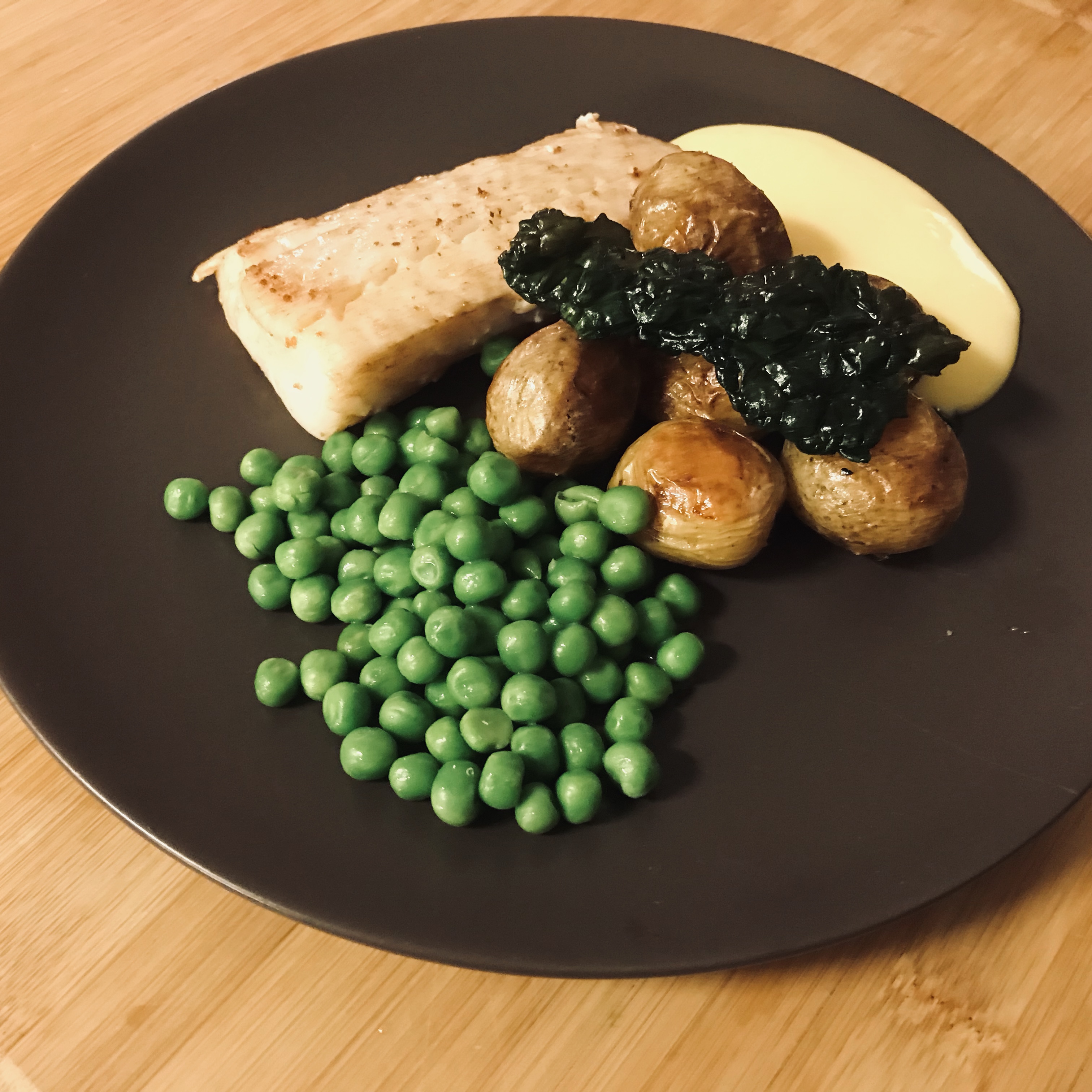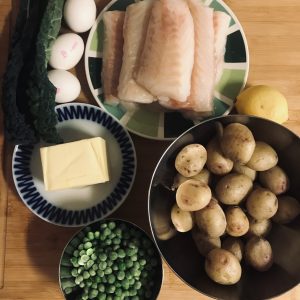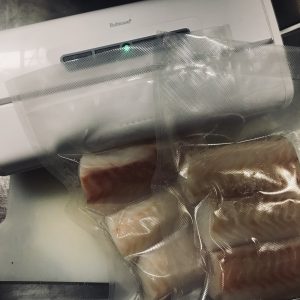
Sometimes… most of the time..? All the time?! No, probably most of the time, the simple stuff is the best. Cod, potatoes, butter sauce. That’s perfect, isn’t it? I think so. I’m going to complicate stuff a bit (duh) but the basis of this dish is really simple. A few ingredients and very straight forward flavors.
We eat a lot of fish in Sweden and cod is kind of the king of the fishes. Or something. I tried to find the translation for this specific part of the cod (the back fillet) but I… well I failed. Maybe the English-speaking world does not make the distinction?
In this recipe I’m cooking the fish with the sous vide technique but it’s brilliant pan fried as well. It’s just a little bit easier to get it just right when using sous vide. Btw, I use the ANOVA sous vide machine, which I can really recommend.
So what’s the deal with sous vide? Well, it’s pretty straight forward. Vacuum seal something in a plastic bag with some spices and/or butter or whatever you think might be good. Then put the bag(s) in a temperature controlled water bath at the exakt temperature you want your meat/fish/veggie/whatever to be cooked at, and leave it in there for a long time (as compared to the cooking time using more “traditional” techniques). I think it’s pretty rare to get well prepared fish at “not-high-end”- restaurants, and actually also at many higher end restaurants. Why? It’s almost always overcooked. Dry, overcooked fish is… I mean, it’s not horrible or gross or whatever but it’s just such a waste, right? When it’s juuuust right, it’s almost falling apart, it’s cooked through but only just so and it’s brilliant. When you’ve had that perfect thing, the overcooked one is such a sad reminder of what could have been. With sous vide, it’s so easy to get it just as you want it and basically impossible to fail. So you should really try it.

